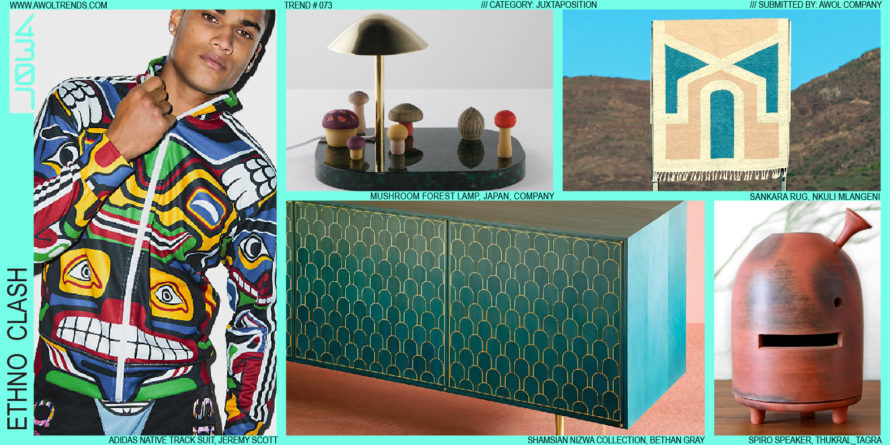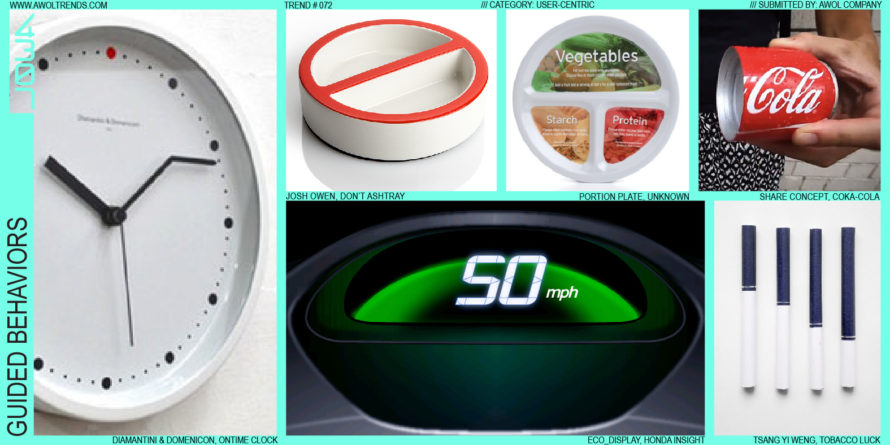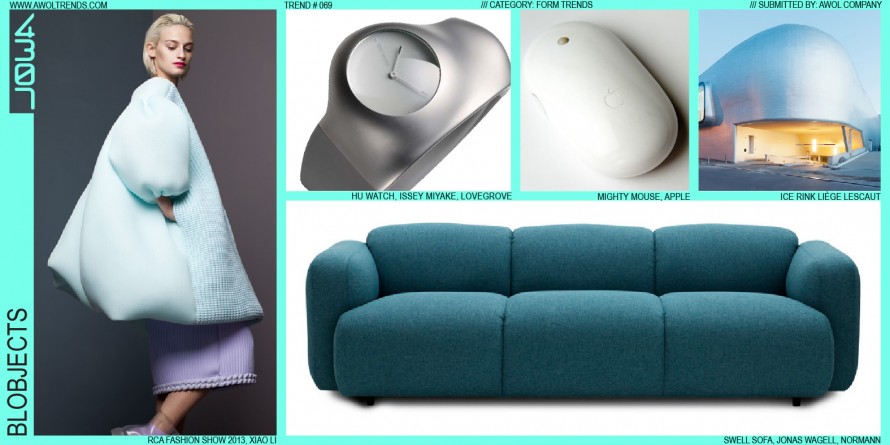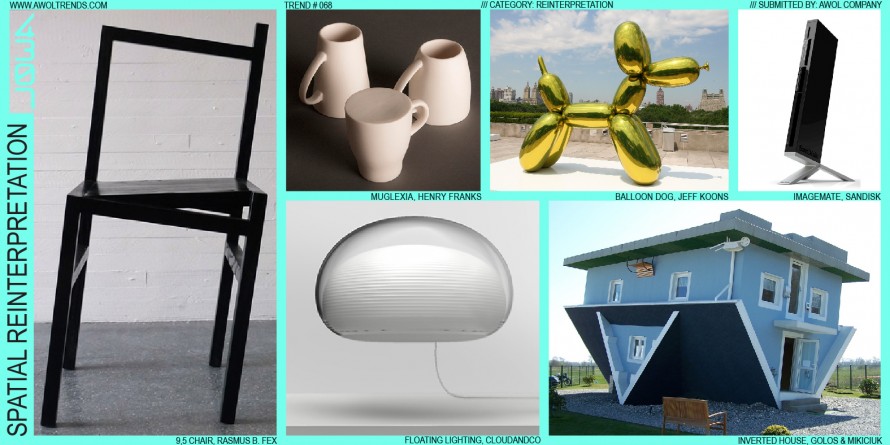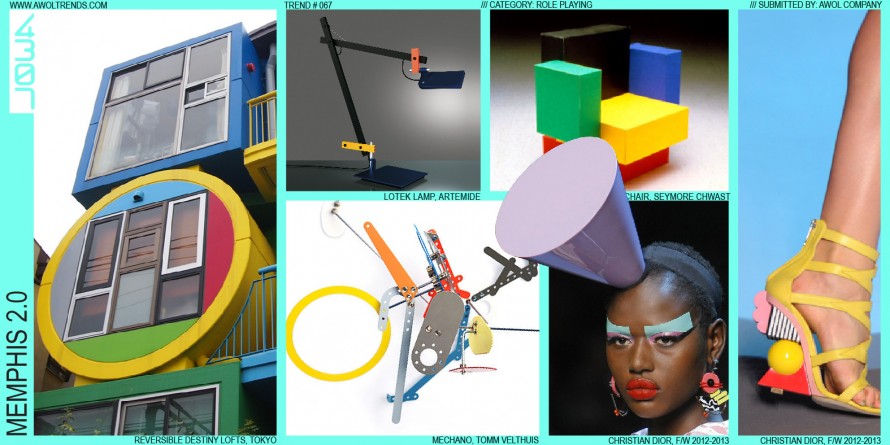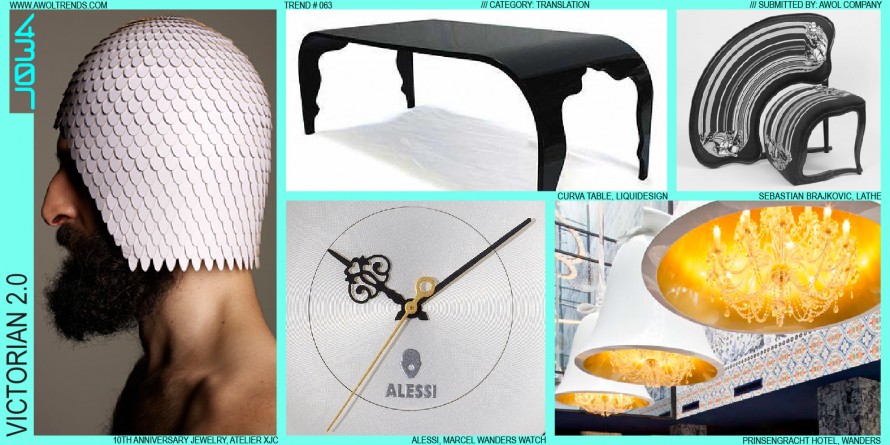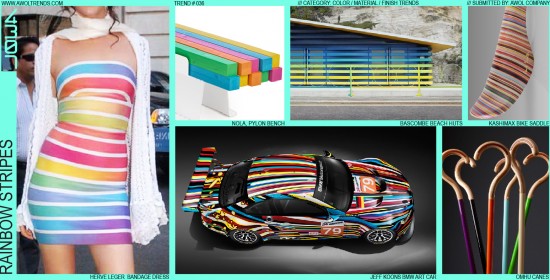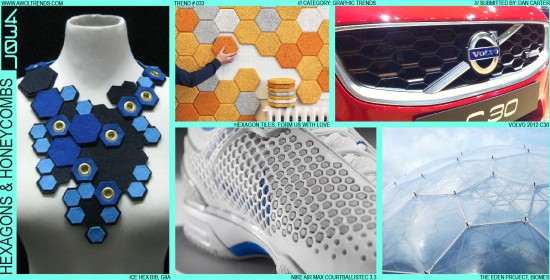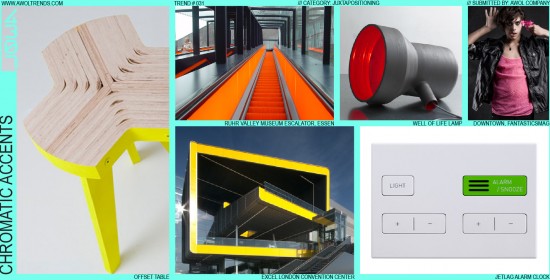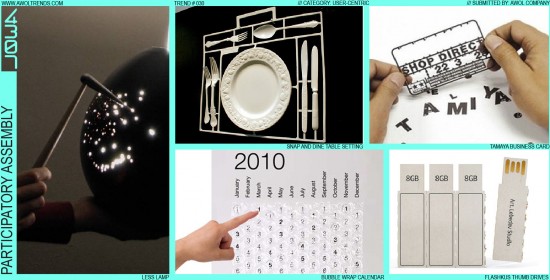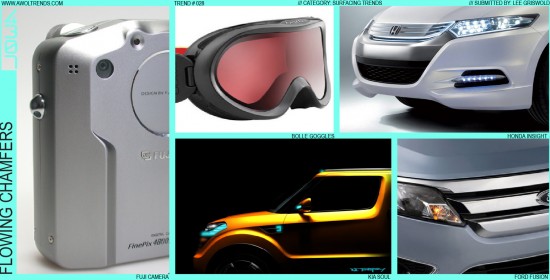Although rainbows have been a frequently occurring visual theme in modern culture (kid’s characters, hippies, the GLBT community, Mork), in recent years they have been increasingly present in the Product, Fashion, Furniture, and Architecture categories. Possible reasons behind this resurgence are many (these colors are particularly vibrant against today’s prominent...
Read more
BONE LINES
Many aesthetic themes represent designers’ attempts to replicate natural organic structures in man-made materials. Bone Lines have been used heavily in Automotive design to bring tension and structure to a car’s sheet metal skin. Ideally, these subtle fading ridges that flow along a surface are actually caused by an underlying...
Read more
PIXELMANIA
In keeping with the Translation category’s definition of bringing a visual language from another world into our own, Pixelmania celebrates the union of digital and physical. The most fundamental unit of the digital world is the pixel: the atom from which all digital experiences are built. Constructing shapes from that...
Read more
HEXAGONS & HONEYCOMBS
The use of hexagons, alone or in a repeating pattern, has long been the stuff of sci-fi set design. Nothing says moon colony (to someone familiar with ‘70s or ‘80s sci-fi) like a nice array of hexagonal windows peering into space. However, they have evolved in recent years to become...
Read more
RE-ARCHITECTING
Every product, in every category, in every era has a certain established architecture that serves as the foundational structure for the product’s design. The origin of this architecture is usually highly evolutionary, building incrementally upon previous successful iterations until an optimized pattern emerges. Modern cars still have four wheels, one...
Read more
CHROMATIC ACCENTS
In keeping with the theme of the Juxtaposition category, this trend highlights the use of an intense color accent to contrast with a more muted primary color palette. The result is an immediate first-read dissonance that makes the accent color really pop as a vibrant element in an otherwise orderly...
Read more
PARTICIPATORY ASSEMBLY
Typically, products and services arrive to us fully formed: they are ready to use right out of the box. In fact the concept of having to assemble something (IKEA furniture, my daughter’s bike, etc.) has long been the mark of low-quality/low-cost products (hey, she’s 5; does she need a fancy...
Read more
FLEXIBLE STRUCTURES
When it comes to accommodating the dynamics of the human form, it is critical that the tools and structures around us have a resilient capacity to flex, yield, and flow. This has long been the domain of specialized materials: from spongy cushions and fabrics that afford sitting, to rubber grips...
Read more
FLOWING CHAMFERS
There are only so many ways to turn a corner. Although furniture makers have long used intricately-routed edges as decorative motifs, for decades product design was married to the all-mighty Radius. If a designer needed to transition from one surface to another, the only real decision was what size that...
Read more
REPURPOSING
The role of design in the global consumer economy has led to a surge in industry-wide sustainability awareness. Despite lagging other parts of the developed world, the last decade in the US has seen a spotlight put on the quantity of products we produce, the impact involved in their production...
Read more


